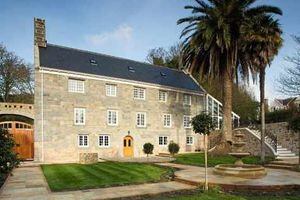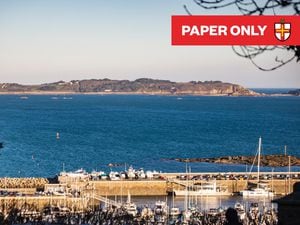These are interesting times
As the States looks to sell off some of its notable buildings, Trevor Cooper wonders if they will manage to achieve their asking prices – and whether listing as a protected building is a liability...

As the States looks to sell off some of its notable buildings, Trevor Cooper wonders if they will manage to achieve their asking prices – and whether listing as a protected building is a liability...
Our usual fascination with the peaks and troughs of the housing market is taking a back seat while focus shifts onto other property matters.
The States Assembly last week approved in principle at least to sell notable buildings within its wide-ranging property stock. Spasmodic sales of States-owned property have generated substantial revenue in the past, but often at well below the asking price.
It is essential to achieve the best prices possible but hopefully the States will not be influenced by overly optimistic valuations of its property portfolio. If the States consider buildings as inappropriate, costly to maintain or redundant, then ready buyers are unlikely to view the properties differently.
The St Peter Port constables considered moving last year and openly condemned their office in Lefebvre Street as not fit for purpose and too expensive to adapt. The building is one of the most attractive and distinctive in the island but would probably sell for less than most people might imagine, if substantial work is necessary.
It is also listed as a protected building. And that's another issue that has been in the news with the Environment Department's sudden listing of White Gables, a farmhouse in St Saviour's, being blamed for its failure to sell at auction. Other factors may have played a part in that particular outcome but the common perception is that, far from bestowing prestige on a property, listing as a protected building is intrusive and a cause of frustration and expense. Critics of the system are demanding greater clarity and flexibility.
But Heritage listings, entrusted upon the Environment Department under a 2003 Ordinance, aim to benefit as well as preserve conservation projects. Les Granges du Beauvoir was already listed as a protected building prior to its magnificent renovation. The endorsement of Guernsey heritage standing upon this restored 17th-century manor house is akin to blue plaque status.
The property was also a worthy finalist in the 2012 Guernsey Design Awards and, also in the news lately, entries for the 2014 awards recently opened.
Developed in association with the Environment Department, Norman Piette and the Guernsey Society of Architects, the awards, which were relaunched in 2012, recognise distinctive, original, inspirational and sustainable design.
There is a wide range of eligible categories that not only includes new buildings but also extensions, restoration projects, lighting schemes, public art assignments and works to protected buildings and monuments completed between the beginning of September 2011 and the end of August 2013.
Not a contender for this but possibly for the next biennial awards could be the conversion of the former pump house at Le Pre de Marie in St Peter's.
In a recent interview by Jim Delbridge in Aurigny's inflight magazine, eminent architect Andrew Dyke spoke generally when he said that a building should be a response to the landscape and needs to show respect and be polite to its neighbours.
This simple wisdom will be realised at L'Infini Maison, as the former pump house has been named. During the next six months the building will be converted into two adjoining houses of differing size. The larger will have five double bedrooms and an open-plan kitchen/living room, plus a separate lounge. The other will have three double bedrooms, all with en-suite facilities, and a similar configuration on the ground floor as the larger house, although on a smaller scale.
This brings us back full circle to the sale of States-owned properties, as the former pump house was the most recent recorded transaction and is a very good example for our politicians to consider. The States achieved nearly £600,000 for a disused, long-time vacant building it no longer needed, and was unlikely to need in the future, and the property will be transformed by a local development company with a rapidly growing reputation into two vibrant and aesthetic homes.
But the redundant building was first advertised at nearly twice the price.
Similarly, the former post office in Smith Street remains unsold, having already been reduced in price by 30%.
The States is proposing to sell some truly remarkable buildings. There is huge residential or mixed-use potential in the police and fire stations, the Castel hospital and Raymond Falla House in St Martin's. Relocating the present occupants of these buildings should, indeed must, be funded ultimately and entirely by the sale proceeds. But developers will not pay more than a building is worth to them, particularly in the present economic climate and no matter the building's prominence.
Also hot off the press is the need to find accommodation for as many as 2,000 students, if the proposed Channel Islands university opens its doors in Guernsey (at the police station or Castel hospital perhaps?). Even a much lower number would add pressure to the island's already heated rental market.
These are certainly interesting times.





